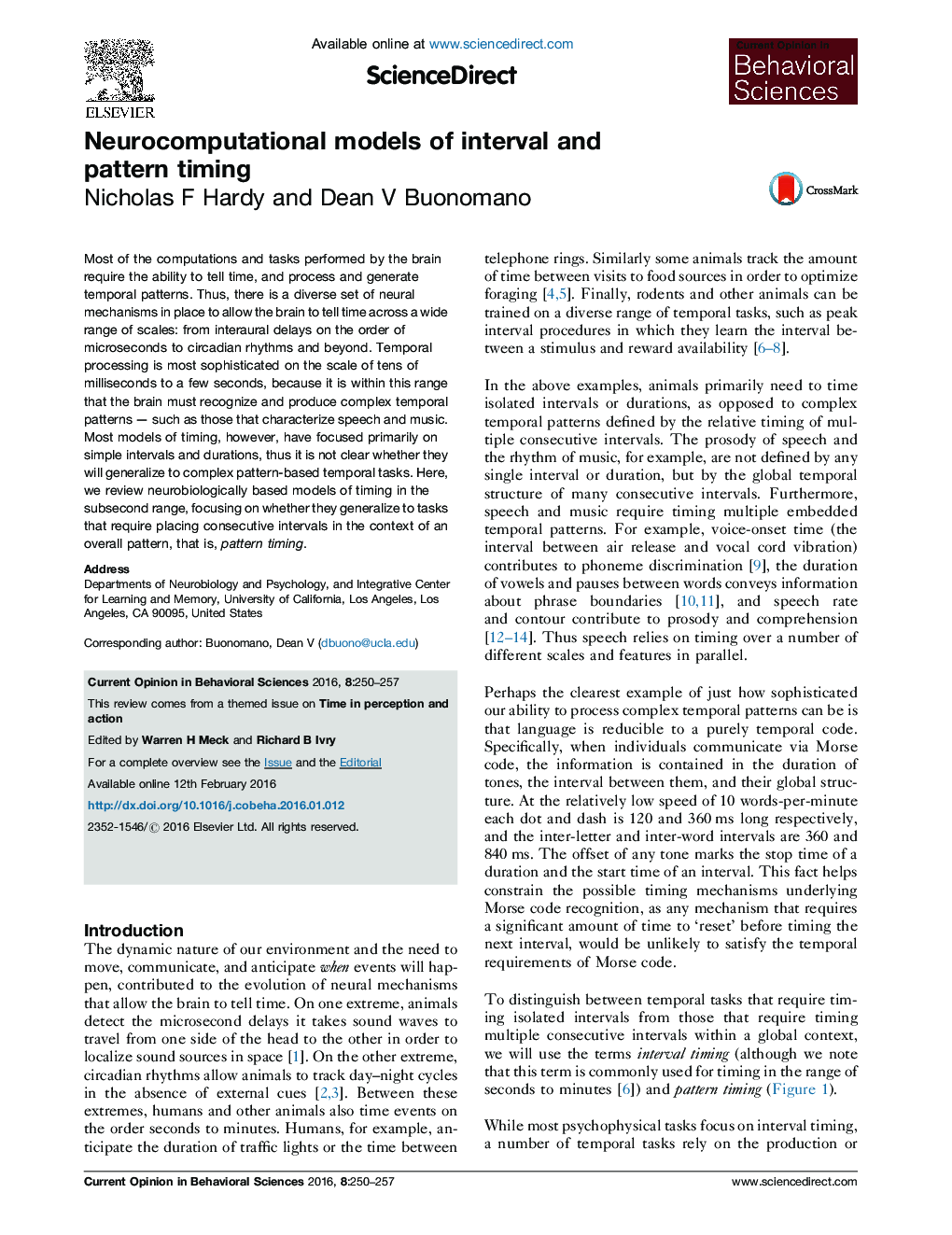| Article ID | Journal | Published Year | Pages | File Type |
|---|---|---|---|---|
| 6260559 | Current Opinion in Behavioral Sciences | 2016 | 8 Pages |
â¢The brain performs both interval and pattern timing tasks.â¢Feedforward and recurrent network models can account for interval timing.â¢State-dependent network models are better suited for pattern timing.
Most of the computations and tasks performed by the brain require the ability to tell time, and process and generate temporal patterns. Thus, there is a diverse set of neural mechanisms in place to allow the brain to tell time across a wide range of scales: from interaural delays on the order of microseconds to circadian rhythms and beyond. Temporal processing is most sophisticated on the scale of tens of milliseconds to a few seconds, because it is within this range that the brain must recognize and produce complex temporal patterns - such as those that characterize speech and music. Most models of timing, however, have focused primarily on simple intervals and durations, thus it is not clear whether they will generalize to complex pattern-based temporal tasks. Here, we review neurobiologically based models of timing in the subsecond range, focusing on whether they generalize to tasks that require placing consecutive intervals in the context of an overall pattern, that is, pattern timing.
